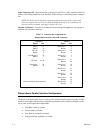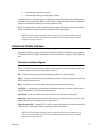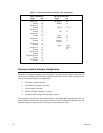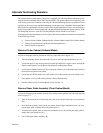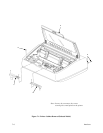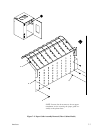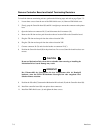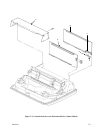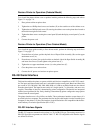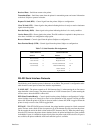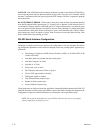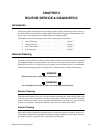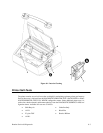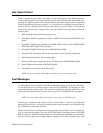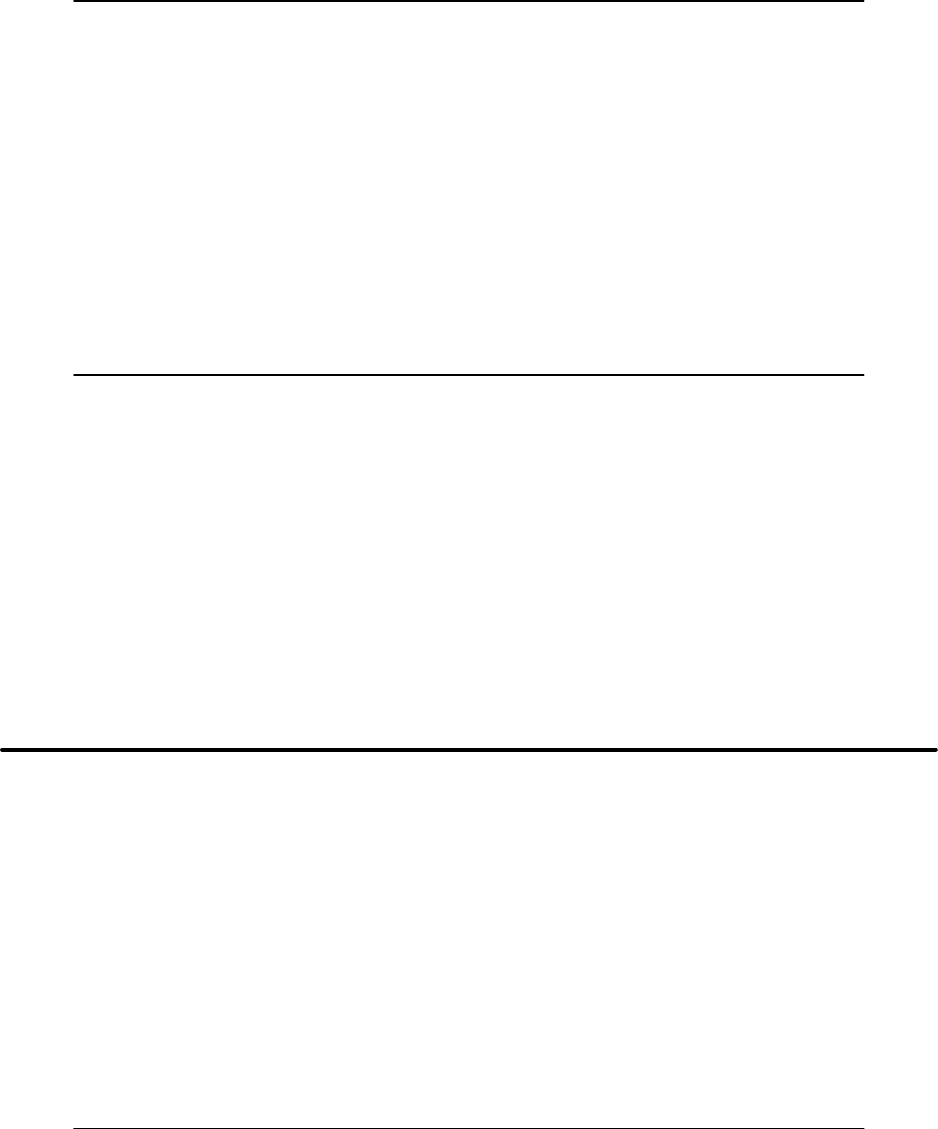
Interfaces7–10
Restore Printer to Operation (Pedestal Model)
To re–install the printer cabinet cover on pedestal models, perform the following steps and refer to
Figure 7–1
on page 7–6.
1. Place printer cabinet on printer base.
2. Tighten the two Phillips head screws and washers (E) on the outside rear of the cabinet cover.
3. Tighten
the two Phillips head screws (D) securing the cabinet cover to the printer base located at
the inside front right and left corners.
4. Tighten
the three screws securing the
control panel (B) and the display control panel (C) to the
printer.
5. Connect the power cord.
Restore Printer to Operation (Floor Cabinet Model)
To
re–install the paper guide assembly to floor cabinet models, perform the following steps and refer to
Figure 7–2
on page 7–7.
1. From the front of printer, position keyhole slots of Paper Guide Assembly (B) over the upper
attachment screws (A).
2. From
the rear of printer
, line up the four holes on the back side of the Paper
Guide Assembly (B)
and insert four screws (D) and tighten to the printer base (C).
3. Tighten the two upper attachment screws (A) to the printer base (C).
4. Close the printer cover and rear door.
5. Connect the AC power cord and turn on printer power.
RS–232 Serial Interface
This
interface enables the printer
to operate with bit serial devices compatible to an RS–232C control
-
ler.
The input
serial data transfer baud rate is selectable from the control panel. Baud rates (Baud: bits
per
second) of
150, 300, 600, 1200, 2400, 4800, 9600, or 19,200 are available. Baud rates are selected
from
the control panel. The input format consists of a single
start bit, 7 or 8 data bits, and one or two
stop
bits. The number of data bits is determined by printer configuration. The data bits are interpreted
with
the least significant bit first. Parity checking is determined by printer configuration setup
options
selected from the control panel.
The
printer interface uses a first–in/first–out buf
fer
. The asynchronous interface accepts data as it is
provided
by the host computer
. The maximum data line length (cable length) from the controller (host
computer)
to the printer is 50 feet. The interface circuit characteristics are compatible with the
Elec
-
tronic Industry Association Specification (EIA–232C).
RS–232 Interface Signals
The RS–232 connector mounted on the printer is a 25 pin DB–25S type. The mating connector is a
DB–25P.
Signal Pin assignments are listed in T
able 7–3. RS–232 compatible serial interface signals
are defined as follows:



